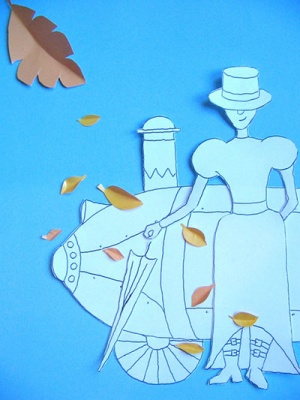Beauty / Beast
NASDA Theatre, E Block, CPIT, Christchurch
01/10/2012 - 03/09/2012
Production Details
Beauty / Beast
Southern Bear Theatre presents an imaginative re-telling of a favourite story. In this quirky tale ballet no longer has the monopoly on dancing fairy-tales: this is ‘Beauty and the Beast’ in contemporary dance.
Featuring a beauty who is not the belle she seems, a beast who becomes a prince, and a handsome royal who discovers what he truly values most. this storytelling / dance mash-up puts the ‘funky’ into fairy tale. A show for all ages.
Company Southern Bear Theatre
Venue NASDA Theatre at CPIT, E Block, Madras Street
Date/Time Mon 1st – Wed 3rd October at 7.00pm
Duration 40 minutes
Cost $15, $10 concessions from Dash Tickets www.dashtickets.co.nz or phone 0800 327 484 booking fees apply
A whimsical experiment
Review by Toby Behan 02nd Oct 2012
It is always a welcome sight to see storytelling unfold within the context of contemporary dance. Although contemporary dance has historically (for good reason) avoided the narrative format, with the art form now in possession of such a strong and independent existence, it is always exciting to witness a story told through dance movement.
Beauty / Beast is aimed squarely at younger audiences (all credit to the Body Festival for including work made for children). The production is an opportunity for an emerging actress / choreographer to experiment. Though Beauty / Beast would likely fall short of expectation for the seasoned contemporary dance audience, inspiration can be suddenly revealed in the most surprising of circumstances.
Beauty / Beast is a re-thinking of the traditional fairy tale, with new elements mixed in with the old. The story is told through a combination of movement sequences, acting, live narration and screen projection (in a nice touch, the words are styled as per the old silent films). It would be nice to see less reliance on the projected words – with more effort directed toward communicating the message through the chosen medium of dance, rather than ‘falling back’ on written explanation (although we recognize the benefit here for the children in the audience, especially).
There are two performers – Kiersten Leslie (also the writer / director) and Sophie Hawkes. The choreography appears to have been a collaborative effort. At a modest 45 minutes this performance is certainly not overlong, and would provide interest for young minds in particular.
A key difficulty in the construction of narrative dance is finding the balance between the action required (to progress the story) and the dance itself. That balance must be struck whilst keeping the story abundantly clear for all concerned. Beauty / Beast has mixed success here – although there is no lack of endeavour from the performers involved. Leslie in particular (as conceiver of the work) wholly inhabits both the world and the characters that she has created.
The performers switch roles frequently throughout the story, with both Leslie and Hawkes portraying each of the three main roles at least four or five times throughout the story. Ultimately (especially as the troll and prince switch bodies early on in the piece) it becomes confusing who is actually who, and consequently keeping track of each character’s individual storyline and development is much harder than it should be. The actual device of changing characters is a clever concept – but there is no clear reason as to why this needs to happen, in terms of serving the story. There are three characters and two performers, so certainly at least one act of trickery is required, but if one performer consistently remained as the Belle (for example) – it would have been easier to keep track of proceedings.
Closely related to this concept is the movement and dance style for each of the characters. There is a clear effort to produce movement that differentiates each of the three characters from each other (although some extra time in developing more creative and expansive movement vocabularies for each character would add huge impact). In general, there is also room to work the narrative of the story into the dance movements more, rather thankeeping on laternating alternate dance sequence, mime sequence, dance sequence etc.
There are amusing and sincere touches of humour scattered throughout the work, which carries a whimsical tone for the duration. The music accompanying each individual scene sounds appropriate as the scene unfolds, but after some time it becomes apparent that the score does not fit together coherently. The musical cuts at the end of a scene are frequently abrupt (as though the sound has simply been switched off) and there are perhaps too many musical styles (classical, jazz, soundtrack) present in the score to allow the piece to bind together properly. With music being such a powerful tool to join the onstage action, there is an opportunity to strengthen the piece here. Despite these matters, the production as a whole is a welcome addition to the Festival programme for 2012 and would certainly benefit from an opportunity to re-work and re-present.
Copyright © in the review belongs to the reviewer





Comments